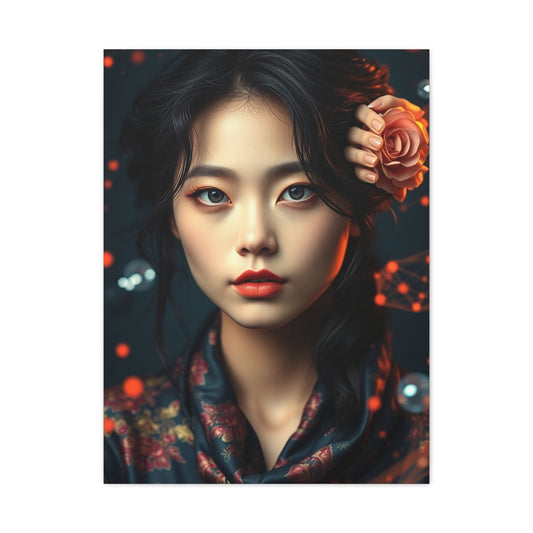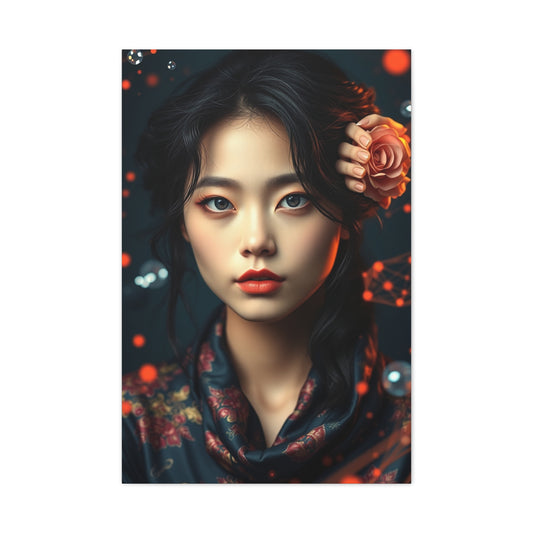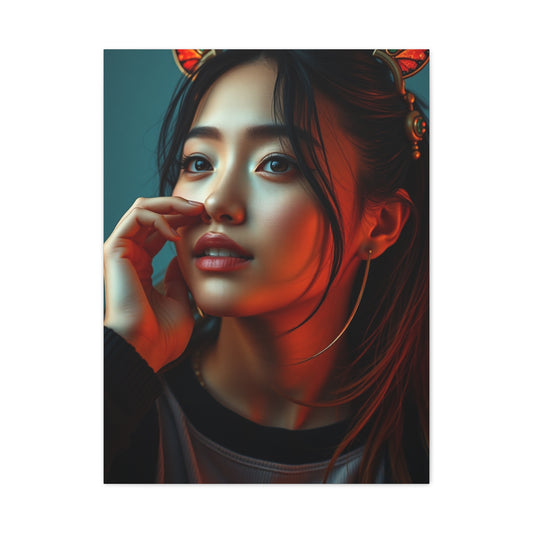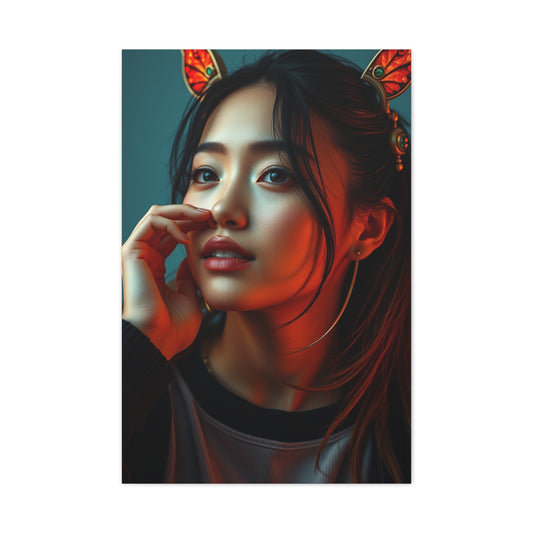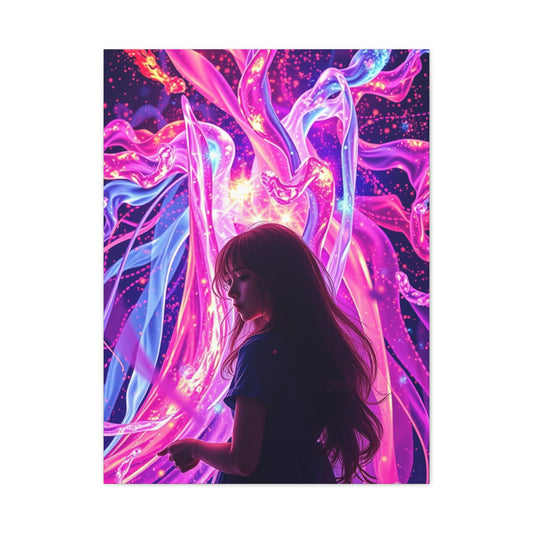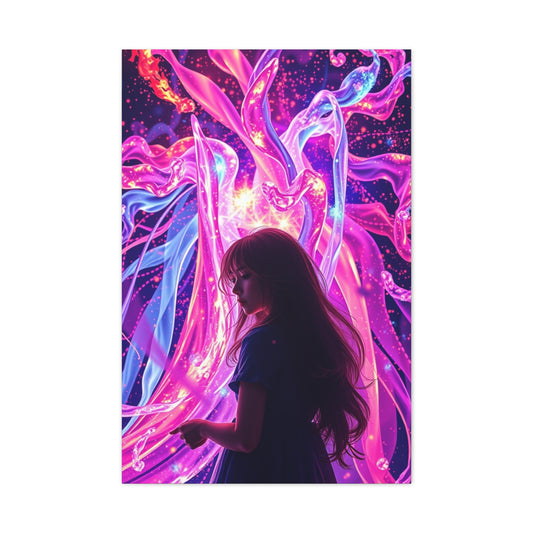Pink has long been celebrated as a color that balances warmth, energy, and serenity. Its unique versatility allows it to embody a spectrum of moods—from the gentle and soothing to the bold and invigorating. Whether you’re aiming to create a cozy bedroom, a lively living room, or a chic study, pink walls can instantly transform your space. Unlike many other colors, pink is inherently flexible and blends harmoniously with a wide range of other shades, textures, and finishes. This makes it an ideal choice for homeowners who want a space that feels both inviting and sophisticated.
One of the most appealing aspects of pink is its psychological impact. Soft shades like blush or pastel pink create a calming and serene atmosphere, perfect for spaces meant for relaxation, such as bedrooms or reading nooks. These lighter hues reflect natural light beautifully, making rooms appear larger and more airy. On the other hand, vibrant tones such as fuchsia, magenta, or coral add drama and energy, making them ideal for accent walls in living rooms or dining areas. Even deep pinks can evoke a sense of luxury and warmth when paired with complementary furnishings and décor elements.
When it comes to combining pink with other colors, the possibilities are nearly endless. Classic neutrals such as beige, cream, and white provide a timeless balance to pink walls. These combinations allow pink to shine without overwhelming the space. For example, a soft pink wall paired with cream-colored furniture and warm wooden accents creates an environment that feels both elegant and inviting. The subtle contrast between the softness of pink and the neutrality of white or beige allows the room to maintain a sense of calm while remaining visually interesting. This approach works particularly well in bedrooms, living areas, and even home offices where a serene environment is desired.
Introducing green into a pink-themed room is another design approach that brings a refreshing and natural vibe. Green, in its various shades—from mint to forest green—creates a delightful visual contrast with pink. Incorporating indoor plants, green upholstery, or patterned wallpapers with leafy motifs can transform a pink room into a lively, vibrant space. The combination of pink and green is reminiscent of blooming gardens, evoking a sense of freshness and tranquility. It is also incredibly versatile, adapting well to both modern minimalist interiors and more eclectic, layered spaces. Small touches like green cushions on a pink sofa, green vases, or leafy prints can enhance the overall aesthetic without overpowering the room.
For those looking to inject energy and playfulness, adding yellow to pink walls can be a creative choice. Yellow is a color that exudes positivity and warmth, making it a natural companion for pink. Light yellow accents, such as lamps, rugs, or decorative objects, can add a cheerful touch to a room with pink walls. This combination is particularly suitable for kitchens, breakfast nooks, or children’s play areas, where a vibrant and uplifting atmosphere is desired. By carefully balancing pink and yellow with neutral elements like white or soft gray, it’s possible to maintain sophistication while still embracing fun and boldness.
Layering multiple shades of pink on a single wall is a design technique that can result in a visually stunning effect. Using ombré gradients or combining complementary pink tones adds depth and dimension to a space. For instance, a light blush base with darker rose accents in the form of furniture, lampshades, or curtains can create a dreamy, harmonious look. This method allows for personalization and creativity, enabling homeowners to experiment with tones and textures to suit their tastes. Mixing materials such as velvet cushions, wooden furniture, and metallic accents can enhance the layered effect, adding richness and texture to a pink-dominated room.
Pink also pairs beautifully with cooler tones like blue and gray. Soft gray walls with pink furnishings or accessories can produce a sophisticated, modern look. Navy or royal blue paired with pink creates a striking and elegant contrast that adds depth to a room. This combination works particularly well in areas where you want to make a statement, such as home offices, living rooms, or entertainment spaces. The coolness of blue or gray balances the warmth of pink, resulting in a refined and stylish aesthetic.
Children’s rooms offer a perfect canvas for pink experimentation. Subtle pastel pinks paired with soft whites, light wood, and muted patterns can create playful yet calming spaces. Incorporating fun elements like polka-dotted bed linens, frilled pillows, or pastel rugs adds charm without overwhelming the senses. Pink walls in a child’s room don’t have to be overly stereotypical; instead, they can serve as a backdrop for imaginative and creative décor that stimulates visual interest and comfort.
When designing a bedroom with pink walls, consider combining shades of pink with romantic or luxurious accents. Wallpaper with floral prints, soft pink drapes, or blush-colored cushions can enhance the space’s warmth and intimacy. Even small decorative choices, such as bedside lamps, rugs, or bedding in complementary pink tones, can dramatically affect the overall ambiance. The key is to balance pink’s natural vibrancy with elements that enhance its softness, creating a harmonious, inviting bedroom environment.
Experimenting with contrasting colors can yield bold and visually engaging results. For example, combining pink with shades of gray, rose gold, or even muted blacks can produce a contemporary, chic look. Pink walls with gray furniture or cabinetry create a sophisticated, stylish contrast that is both modern and timeless. This approach is particularly effective in spaces like master bedrooms or living rooms, where a touch of drama is desirable. Using metallic accents or textured surfaces can further elevate the design, adding elegance and depth to pink-themed interiors.
Texture and pattern play a crucial role in enhancing pink walls. Wallpapers with subtle designs, textured paint finishes, or patterned stencils can transform a simple pink wall into a focal point. Combining these elements with thoughtful furniture placement and décor ensures the room feels cohesive and well-balanced. Soft fabrics such as velvet or linen in cushions, curtains, or upholstery complement pink walls beautifully, adding tactile interest and a sense of comfort. Layering textures alongside pink hues prevents monotony, making the space feel lively and dynamic.
Lighting is another critical factor in maximizing the beauty of pink walls. Natural light enhances the soft, welcoming nature of lighter pink shades, making rooms feel bright and open. In spaces with limited natural light, warm artificial lighting can bring out the richness of pink hues, creating a cozy and inviting atmosphere. Accent lighting, such as wall sconces or table lamps, can also highlight textured walls, patterns, or décor elements, adding depth and dimension to pink-dominated spaces.
Pink walls create a striking backdrop that can completely transform the look and feel of a room. The choice of furniture, decorative accents, and textures is crucial in ensuring that pink does not dominate the space but rather harmonizes with its surroundings. One of the most versatile approaches is to pair pink walls with neutral-toned furniture. Shades like white, cream, beige, or light gray provide a subtle contrast that allows pink to remain the focal point without overwhelming the senses. A beige sofa against a soft pink wall, for instance, creates a calming visual balance, while white cabinets or shelving units add a clean, airy feel. This combination is ideal for living rooms or lounges where a relaxed yet sophisticated atmosphere is desired.
Wooden furniture complements pink walls exceptionally well, introducing a natural warmth and grounding the room’s aesthetic. Light wooden tones, such as oak or maple, pair beautifully with blush pink, creating a Scandinavian-inspired vibe that feels fresh and modern. Darker wood, like walnut or mahogany, adds drama and elegance, especially when combined with richer shades of pink such as fuchsia or deep rose. Consider wooden coffee tables, bed frames, or shelving units to anchor the space while allowing the pink walls to shine.
Metallic accents can enhance pink walls with a touch of luxury and glamour. Gold, rose gold, and copper finishes work particularly well, offering a sophisticated shimmer that elevates the overall décor. Accessories like metallic lamps, picture frames, drawer handles, or decorative trays can highlight the pink walls and introduce subtle visual interest. For a more understated approach, silver or brushed nickel accents can add a modern, sleek contrast that pairs well with both soft and bold pink shades.
Textiles play a pivotal role in complementing pink walls and creating a cohesive interior. Cushions, throws, curtains, and rugs in complementary tones can soften the boldness of pink and introduce texture. For example, pairing a blush pink wall with velvet cushions in pastel shades or patterned throws can create depth and tactile interest. Layering rugs in muted patterns or neutral shades helps anchor furniture while adding a sense of warmth. Curtains in shades like cream, ivory, or even deeper rose provide balance and elegance, preventing the pink walls from appearing too intense.
Patterned elements can also be introduced to enhance the design without overshadowing the pink walls. Geometric patterns, floral motifs, or abstract designs can add personality and character to the room. A pink wall paired with a wallpaper featuring subtle floral patterns in gold or beige creates a refined, classic look, while geometric accents in black or white add a modern twist. Small décor items, such as patterned vases, cushions, or lampshades, can subtly incorporate patterns without making the space feel busy.
In dining areas, pink walls can be paired with wooden or metallic dining tables and chairs for a balanced, welcoming environment. A light pink wall behind a sleek wooden dining table creates an inviting space for family meals, while deeper pink shades can add drama and sophistication for formal dining settings. Chairs upholstered in neutral tones, complemented by cushions or placemats in soft pink, create visual continuity and a cohesive look. Hanging pendant lights with metallic finishes can further elevate the dining experience while complementing the pink walls.
When decorating living rooms with pink walls, consider layering furniture in complementary shades and materials. A sofa in a neutral tone, paired with a pink accent chair or pouf, adds visual interest without overpowering the space. Coffee tables in wood, glass, or metal can serve as functional focal points, while side tables in complementary hues tie the room together. Accessorizing with art, mirrors, or decorative objects that feature pink accents ensures a consistent theme and enhances the room’s overall aesthetic.
Lighting plays a significant role in enhancing the beauty of pink walls. Natural light brings out the soft, warm tones of blush pink, creating an airy and inviting environment. In rooms with limited natural light, warm artificial lighting can enhance the vibrancy of pink walls. Soft LED lights, floor lamps, or table lamps can illuminate the space while creating a cozy ambiance. Accent lighting can also be used to highlight architectural features, artwork, or textured wall finishes, adding depth and sophistication to the room.
In bedrooms, pink walls offer endless opportunities for creativity and personal expression. A subtle pastel pink provides a serene backdrop for a restful space, while deeper pink shades can add drama and romance. Bedding and linens in complementary colors such as white, cream, gray, or metallic tones can create a harmonious look. Layering pillows, throws, and rugs in various textures such as velvet, silk, or cotton enhances comfort and visual appeal. Nightstands, dressers, and bed frames in neutral or wooden finishes anchor the space and balance the vibrancy of the pink walls.
Incorporating contrasting colors into a pink room can yield bold and dynamic results. Navy blue, teal, or emerald green paired with pink walls creates a sophisticated and visually striking contrast. Furniture or accent pieces in these colors, such as sofas, chairs, or cushions, can make a room feel more modern and refined. For a softer contrast, pastel shades like mint green or powder blue work beautifully with lighter pink walls, creating a harmonious and calming palette. Accessories such as wall art, vases, or lamps in contrasting colors provide subtle pops of color that enhance the overall design.
Pink walls can also be paired with shades of gray to create a contemporary and chic look. Light gray furniture and décor elements complement soft pink walls, producing an understated elegance. Dark gray or charcoal pieces add depth and sophistication, particularly in living rooms or master bedrooms. Combining pink and gray with metallic accents, such as gold or rose gold, enhances the modern appeal and creates a balanced, luxurious aesthetic.
Adding greenery to a room with pink walls is an excellent way to infuse life and vibrancy into the space. Indoor plants, potted trees, or even green accents in furniture or décor bring a refreshing natural element. Plants not only enhance the visual appeal but also improve air quality and create a calming, rejuvenating environment. Consider arranging plants of varying heights and leaf shapes to create a layered, dynamic look that complements the pink walls.
For home offices or creative spaces, pink walls can boost energy and inspire creativity. Soft pink shades create a calming backdrop, while brighter tones can energize the room. Furniture in neutral shades with sleek lines allows the pink walls to remain the focal point, while functional décor elements such as shelves, organizers, and desks ensure practicality. Adding colorful stationery, wall art, or accent pieces in complementary shades enhances the workspace and makes it visually stimulating.
Bathrooms and powder rooms also offer opportunities to experiment with pink walls. Soft blush walls paired with white or cream tiles create a spa-like, serene environment. Pink walls combined with marble or metallic fixtures add a touch of sophistication and elegance. Small accents such as towels, rugs, or shower curtains in complementary tones enhance the overall aesthetic without overpowering the space.
Pink walls are equally adaptable for children’s rooms. Subtle pastels create a calming environment, while brighter pinks add a fun, playful vibe. Furniture in neutral tones, soft rugs, and colorful décor items help balance the intensity of pink walls. Layering textures, patterns, and shapes adds a sense of adventure and creativity to the room, making it a visually stimulating and enjoyable space for children.
Accessories and décor elements are the finishing touches that bring a pink-themed room together. Mirrors, artwork, vases, lamps, and decorative trays in complementary or contrasting shades enhance the room’s character. Textured items such as woven baskets, knitted throws, or patterned cushions introduce depth and interest. Strategic placement of décor ensures that the pink walls remain the focal point while the room maintains balance, warmth, and sophistication.
Pink walls are incredibly versatile, serving as a dynamic foundation for a variety of interior design approaches. Once the basics of furniture, textures, and neutral pairings are established, exploring advanced color pairings and creative wall styling can elevate a space from ordinary to extraordinary. Understanding how to combine pink with different colors, patterns, and design elements allows homeowners to craft interiors that feel sophisticated, playful, or even dramatic, depending on their desired aesthetic.
One of the most compelling ways to enhance pink walls is through complementary color pairings. While neutrals such as white, beige, and gray provide balance, combining pink with deeper or contrasting hues can add visual intrigue. For instance, pairing a blush pink wall with navy blue furniture and accents creates a bold yet balanced contrast. The deep, cool tones of navy act as a grounding element against the softness of pink, lending a sophisticated, modern feel to the room. Adding accessories in metallic shades like gold or brass can further elevate the space, creating a luxurious and cohesive aesthetic. This combination works particularly well in living rooms, offices, or formal dining spaces where a sense of elegance and refinement is desired.
Green is another color that pairs beautifully with pink walls. While the combination might initially seem unconventional, green adds a refreshing natural element that complements pink’s warmth. Light greens, such as mint or sage, provide a calming backdrop, making rooms feel serene and airy. In contrast, richer greens like emerald or forest green introduce drama and depth, especially when used in furniture, accent walls, or decorative elements. Incorporating plants into a pink-themed room not only enhances the color palette but also brings life, texture, and a sense of nature indoors. Green upholstery, curtains, or cushions can also subtly tie the space together, creating harmony while maintaining visual interest.
Yellow is a color that injects vibrancy and playfulness into pink spaces. Soft yellow accents can create a cheerful, inviting atmosphere, while brighter tones add energy and warmth. Pairing a pastel pink wall with pale yellow furniture or décor items gives the room a whimsical, light-hearted feel, ideal for kitchens, children’s rooms, or casual living areas. Brighter yellow tones can be incorporated through lamps, rugs, or artwork, offering a striking contrast to the softness of pink walls without overwhelming the overall design. Careful use of yellow accents ensures that the space feels balanced, dynamic, and visually appealing.
Blue and gray are excellent companions for pink walls, especially in creating modern and sophisticated interiors. Soft gray furniture against light pink walls produces a subtle, elegant look, perfect for bedrooms, living rooms, or home offices. Darker shades of gray, combined with deeper pinks, create a more dramatic effect, adding depth and dimension to a space. Incorporating blue elements—whether in wall art, cushions, or accent furniture—further enhances the contrast and creates a balanced, visually captivating environment. This approach is particularly effective in areas where you want to make a statement while maintaining harmony and style.
Incorporating multiple shades of pink on a single wall can create a striking and personalized effect. This technique, often referred to as monochromatic layering, involves blending different tones of pink—from soft blush to deep rose—across walls, furniture, and décor. This method adds depth and complexity to the room, allowing for a cohesive yet dynamic aesthetic. For example, a living room with pale pink walls, a dusty rose sofa, and blush cushions achieves a visually rich environment while remaining elegant and soothing. Combining this approach with neutral or metallic accents can further enhance the overall sophistication of the space.
Wall patterns and textures play a crucial role in elevating pink-themed interiors. Textured paint finishes, wallpapers with subtle patterns, or stenciled designs can add interest without competing with pink walls’ inherent vibrancy. Floral motifs, geometric designs, or abstract patterns provide a decorative element that complements the room’s overall theme. For instance, a pink wall with delicate gold geometric wallpaper can add an element of luxury, while pink walls paired with soft floral patterns evoke a romantic and whimsical ambiance. Textured finishes like Venetian plaster or matte and satin contrasts can also create visual intrigue and tactile depth, making pink walls more engaging and layered.
In living rooms, combining pink walls with patterned accent walls can create a focal point while maintaining balance. A single wall with a bold floral wallpaper or geometric pattern draws attention without overwhelming the room. Complementary furniture in neutral tones, along with subtle accessories in shades that echo the wall pattern, ensures harmony. Similarly, in bedrooms, an accent wall behind the headboard in a darker or patterned pink creates depth and intimacy. Coordinating bedding, curtains, and cushions with these shades enhances the layered effect and contributes to a cohesive, luxurious feel.
Incorporating metallic accents, whether through furniture, fixtures, or décor, can elevate pink walls to a modern, glamorous level. Gold, rose gold, and brass add warmth and sophistication, particularly when paired with blush or pastel pink. Metallic elements such as side tables, lamps, picture frames, or decorative trays introduce subtle shimmer and visual interest. For a more understated, contemporary look, silver, chrome, or matte black accents provide a sleek contrast that balances pink walls while keeping the design refined. Layering these metallic tones across furniture, décor, and lighting creates a cohesive, polished aesthetic.
Lighting plays an essential role in highlighting pink walls and their complementary elements. Natural sunlight enhances the warmth of soft pink shades, making rooms feel more spacious and inviting. In spaces with limited natural light, warm artificial lighting can bring out the richness of pink tones, ensuring that walls do not appear dull or washed out. Accent lighting, such as wall sconces, table lamps, or pendant lights, can be strategically positioned to highlight textured finishes, wall patterns, or key décor pieces. This approach creates depth, dimension, and ambiance, making pink-themed interiors feel more layered and thoughtfully curated.
In kitchens, pink walls can provide a modern, fresh aesthetic when paired with cabinetry and countertops in complementary shades. Light pink walls work well with white or cream cabinets, creating a clean and airy feel. Deeper pinks combined with dark countertops, metallic fixtures, or wooden elements add contrast and sophistication. Adding colorful kitchenware, backsplash tiles, or decorative elements in contrasting or complementary colors can further enhance the visual appeal while maintaining a harmonious balance.
Bathrooms and powder rooms offer a smaller-scale opportunity to experiment with pink walls and patterns. Light pink walls paired with white tiles, marble finishes, or metallic fixtures create a spa-like, serene environment. For a bolder look, consider darker pink walls with gold or brass accents, adding drama and elegance. Accessories such as towels, rugs, and bath mats in complementary shades help tie the room together. Patterned wallpapers or textured finishes in bathrooms can create a statement while maintaining functionality and style.
Pink walls also provide an ideal backdrop for art and decorative pieces. Wall art featuring complementary colors or metallic frames adds personality and enhances the room’s aesthetic. Mirrors, particularly those with ornate or metallic frames, can amplify natural light, making rooms appear larger and brighter while accentuating the beauty of pink walls. Sculptural pieces, vases, and decorative trays in contrasting or matching tones further enhance the layered and cohesive look. By thoughtfully curating these elements, pink walls transform into a sophisticated and inviting canvas for expression.
In children’s rooms, pink walls allow for a playful and imaginative approach. Pastel pink shades provide a soft, calming backdrop, while brighter hues add energy and vibrancy. Furniture in neutral tones, combined with patterned or colorful décor items, creates a balanced, visually stimulating environment. Layering textures such as plush rugs, cozy bedding, and cushions adds comfort and tactile interest. Incorporating whimsical elements like wall decals, themed accessories, or playful art pieces can further personalize the space while ensuring harmony with pink walls.
Finally, layering pink with unconventional colors can create bold, contemporary interiors. For instance, pairing pink with black or charcoal gray creates a striking, modern contrast that exudes sophistication. Pink with deep teal or emerald green introduces a luxurious, elegant aesthetic. Even unexpected combinations like pink with mustard, terracotta, or muted violet can yield unique, stylish results when carefully curated. The key is to balance intensity with neutral elements, using accessories, furniture, and lighting to maintain cohesion while highlighting the beauty of pink walls.
Pink walls create a versatile and inviting foundation for any interior, but the true magic lies in how the space is accessorized, styled for different seasons, and maintained for long-term beauty. The finishing touches in a room can define the atmosphere, making the space feel luxurious, cozy, or vibrant depending on the choices made. By thoughtfully selecting décor, seasonal accents, and practical strategies, homeowners can ensure that pink walls remain timeless, functional, and visually appealing throughout the year.
One of the most effective finishing touches for pink walls is the use of textiles. Curtains, cushions, rugs, and throws in complementary shades help balance the room and introduce texture. For instance, a blush pink wall can be paired with cream or ivory curtains for a soft, calming effect, or with deeper rose-colored fabrics for added depth and intimacy. Layering rugs with different textures, patterns, or shades of pink can create a cozy, tactile environment, perfect for living rooms or bedrooms. Velvet cushions, knitted throws, or patterned carpets enhance the tactile richness of a space, making it inviting and comfortable.
Artwork and wall décor are key elements for enhancing pink walls. Pieces in contrasting or complementary shades add visual interest and personality to a room. Large statement art pieces, framed prints, or wall sculptures can serve as focal points against a pink background. Metallic frames in gold, rose gold, or brass add sophistication, while black or dark-toned frames provide a striking modern contrast. Consider arranging multiple smaller pieces in a gallery-style layout to create depth and dimension. This approach allows the pink walls to remain the backdrop while giving the space character and style.
Mirrors are another effective tool for enhancing pink walls. Large mirrors amplify natural light, making rooms feel more spacious and bright. Decorative mirrors with metallic or textured frames serve both functional and aesthetic purposes, reflecting the beauty of the pink walls while adding a layer of elegance. Placing mirrors strategically near windows or light sources maximizes brightness and highlights design features, creating a dynamic and visually appealing interior.
Lighting is a critical factor in maintaining the beauty of pink walls. Natural light highlights the softness and warmth of pink tones, while artificial lighting can enhance vibrancy and depth. Warm-toned lights, such as amber or soft white LEDs, complement pink walls beautifully, creating a cozy and inviting atmosphere. Accent lighting, including wall sconces, pendant lamps, and floor lamps, can be used to emphasize textures, patterns, or decorative elements. Layering lighting—combining ambient, task, and accent sources—ensures that the room remains functional and visually balanced.
Seasonal styling allows pink walls to adapt to different moods and occasions. During spring, soft pink walls paired with floral décor, pastel cushions, and light, airy curtains evoke freshness and renewal. Summer styling can incorporate bright yellow, turquoise, or green accents to create a lively, vibrant atmosphere. In autumn, layering warm tones like burnt orange, terracotta, or deep red against pink walls adds coziness and richness. Winter styling can focus on metallic accents, deep green foliage, or rich fabrics to bring warmth and sophistication to the space. By adjusting accessories and accents with the seasons, pink walls remain versatile and continually refreshing.
Incorporating natural elements enhances the appeal of pink-themed interiors. Wooden furniture, wicker baskets, jute rugs, and stone or ceramic accents introduce warmth and organic texture. Greenery, including indoor plants, succulents, or floral arrangements, brings life and freshness to pink walls. The combination of natural elements with pink creates a harmonious balance, softening bold shades and complementing softer hues. Seasonal plants, such as blooming spring flowers or evergreen foliage in winter, can be used to refresh the room’s appearance and enhance the natural connection with pink walls.
Functional décor items play a dual role by providing utility while enhancing style. Storage solutions such as elegant cabinets, open shelving, and decorative baskets help maintain organization without disrupting the aesthetic. Pink walls can be complemented with storage units in neutral tones, wood, or metallic finishes, ensuring that functional elements blend seamlessly with the overall design. Multi-purpose furniture like ottomans with storage, side tables with drawers, or beds with built-in compartments adds practicality while maintaining elegance and harmony with pink-themed interiors.
In living rooms, coffee tables and side tables act as both functional and decorative elements. Choosing pieces in wood, glass, or metal that complement the pink walls ensures visual cohesion. Accessorizing tables with vases, candles, decorative trays, or books in complementary colors adds depth and sophistication. Layered textures, such as a glass top with a wooden base or metallic accents on a wooden table, enhance interest and tie the room together. This approach ensures that pink walls are highlighted while the furniture and décor maintain balance and functionality.
In bedrooms, pink walls offer opportunities for intimate and personalized styling. Bedding, pillows, and throws in coordinated shades of pink, blush, or neutral tones create a harmonious look. Layering textures, such as velvet cushions, silk sheets, or knitted throws, adds richness and depth. Nightstands and bedside lamps in complementary colors or metallic finishes further enhance the design, while personal touches like framed photographs, artwork, or decorative objects create a sense of warmth and personality. A well-balanced combination of color, texture, and accessories ensures that pink walls become the foundation for a serene and inviting bedroom.
In dining areas, pink walls can create an elegant and vibrant backdrop for meals and gatherings. Coordinating table settings, placemats, and centerpieces with the wall color enhances visual appeal. Furniture in wood, metal, or neutral upholstery complements pink walls while maintaining functionality. Seasonal décor can also be incorporated, such as floral arrangements in spring, warm-toned candle holders in autumn, or metallic accents during festive periods. By integrating these elements thoughtfully, pink walls become a versatile foundation for stylish and inviting dining spaces.
Bathrooms and powder rooms can benefit from creative styling with pink walls. Soft pink shades paired with white or cream tiles create a clean, spa-like ambiance, while deeper pinks add drama and sophistication. Incorporating textured finishes or patterned tiles adds visual interest. Accessories like towels, rugs, and decorative items in complementary shades enhance the room’s character. Metallic fixtures in gold, rose gold, or chrome provide a luxurious touch, creating a cohesive and elegant space. Layered lighting ensures functionality while highlighting the beauty of pink walls and decorative elements.
Children’s rooms offer a playful and imaginative approach to pink walls. Pastel pink shades provide a calming environment, while brighter hues add energy and vibrancy. Furniture in neutral tones or soft pastels maintains balance, while patterned or colorful décor items introduce visual interest. Layering textures through rugs, bedding, and cushions enhances comfort and engagement. Wall decals, themed artwork, or whimsical accessories further personalize the space, creating a stimulating and joyful environment that complements pink walls.
Maintaining pink walls over time is essential to preserving their aesthetic appeal. Regular cleaning and care prevent fading, staining, or discoloration. For painted walls, gentle cleaning with a damp cloth or mild detergent is typically sufficient. Wallpapers or textured finishes may require specialized cleaning approaches to maintain their appearance. Avoiding harsh chemicals ensures that the color remains vibrant and the finish intact. Periodic touch-ups or repainting may be necessary in high-traffic areas to keep the walls looking fresh and well-maintained.
When selecting décor and accessories for pink walls, it’s important to consider scale, proportion, and balance. Oversized furniture or overly bright accessories can overwhelm softer shades, while small, subtle elements may get lost against bolder pink tones. Combining a mix of large and small pieces, light and dark tones, and varied textures creates a layered and cohesive look. Thoughtful placement ensures that each element enhances the pink walls without competing for attention, resulting in a harmonious and visually appealing space.
Color consistency across different elements of the room is key to creating a polished interior. When incorporating pink into furniture, textiles, and accessories, consider undertones and shade variations. Warm pinks pair well with warm neutrals, wood tones, and metallic accents, while cooler pinks harmonize with grays, blues, and muted greens. Paying attention to undertones ensures a seamless and sophisticated look, preventing clashes and maintaining cohesion throughout the room.
Personalization is another critical aspect of styling pink walls. The choice of artwork, decorative objects, textiles, and furniture allows homeowners to reflect their personality, taste, and lifestyle. Customizing the room with personal touches ensures that pink walls become more than just a color—they become a canvas for self-expression. Incorporating meaningful décor elements, family heirlooms, or handmade accessories adds character and uniqueness, making the space truly one-of-a-kind.
Pink walls also lend themselves to layering styles and aesthetics. For instance, a room can blend modern minimalism with soft, romantic touches. A blush pink wall can coexist with sleek, contemporary furniture, metallic lighting fixtures, and neutral décor, while subtle floral or textured accents introduce warmth and charm. Similarly, eclectic interiors can mix various shades of pink with patterns, textures, and contrasting colors for a playful, energetic environment. The versatility of pink allows it to complement multiple design approaches, ensuring flexibility and creativity in styling.
In commercial or public spaces, pink walls can create a welcoming and memorable impression. Soft pink tones evoke calm and friendliness, while vibrant pinks capture attention and energy. Strategically pairing pink walls with neutral furniture, decorative accents, and lighting enhances professionalism and aesthetic appeal. Thoughtful color combinations can also influence mood and perception, making pink walls a valuable tool in creating an inviting and stylish environment in offices, boutiques, cafes, or salons.
Finally, embracing experimentation and creativity is essential when styling pink walls. The possibilities are virtually limitless—from monochromatic layering to bold contrasts, from textured finishes to patterned wallpapers, and from metallic accents to natural elements. Observing the interplay of light, color, and texture ensures that pink walls remain dynamic and engaging. Over time, updating accessories, textiles, and seasonal décor allows the space to evolve while maintaining harmony and cohesion. Pink walls, when approached thoughtfully, become a timeless and adaptable foundation for interiors that are stylish, inviting, and uniquely personal.
Pink walls offer an incredible opportunity to explore creative interior design techniques. Beyond basic color pairings and complementary furniture, modern trends encourage the use of innovative textures, bold contrasts, and accent elements to elevate spaces. By thoughtfully incorporating these strategies, homeowners can create interiors that feel contemporary, vibrant, and highly personalized.
One of the most popular modern trends is the use of pink walls as a backdrop for eclectic décor. Eclectic design thrives on combining various styles, colors, and textures in a cohesive yet playful manner. Pink walls serve as a versatile canvas, harmonizing with everything from industrial metal accents to bohemian patterns and natural wooden elements. For example, pairing a soft pink wall with a rattan chair, geometric-patterned cushions, and a metallic floor lamp adds depth, personality, and texture. The key to successful eclectic styling is balance—allowing pink to anchor the space while layering diverse elements to create a visually stimulating environment.
Accent walls continue to be a highly effective way to make pink walls stand out. While painting all walls pink creates a warm and cohesive atmosphere, introducing a feature wall with a bold pattern, darker shade, or textured finish adds interest and drama. For instance, a bedroom might feature a blush pink base with a deeper rose-colored accent behind the headboard. In living rooms, geometric wallpaper, velvet panels, or metallic finishes on one wall can transform the space into a stylish focal point. Accent walls give homeowners the freedom to experiment with color and texture without overwhelming the room.
Another trend in modern interiors is mixing pink walls with monochromatic décor. Using varying shades of the same color family creates depth while maintaining a cohesive look. For example, a soft pink wall can be complemented by furniture in dusty rose, blush cushions, and rose gold lighting fixtures. This layered monochromatic approach emphasizes sophistication and elegance while allowing pink to take center stage. The result is a serene, harmonious space with subtle variations in hue and texture that keep the room visually engaging.
Incorporating metallic and reflective surfaces is another contemporary strategy for pink walls. Metallic finishes, such as gold, rose gold, brass, or chrome, add a touch of glamour and luxury. Mirrors, metallic furniture, and decorative accessories reflect light and amplify the vibrancy of pink walls. For example, a living room with a soft pink wall can feature a brass coffee table, rose gold floor lamp, and mirrored sideboard, creating a chic, high-end aesthetic. These reflective elements not only enhance the overall design but also introduce a sense of spaciousness and light.
Layering textures is critical in modern pink interiors. Pink walls can easily appear flat or one-dimensional if the surrounding décor lacks variety. Introducing contrasting materials—such as velvet cushions, wooden furniture, glass tables, and woven rugs—adds tactile interest and visual richness. Textured wallpapers, 3D wall panels, or stucco finishes further enhance the depth and sophistication of pink walls. For example, a blush pink wall with a textured plaster finish behind a wooden console table can create a stylish and dramatic backdrop, ideal for a living room or hallway.
Combining pink with unexpected accent colors is a growing trend in contemporary design. While pastels and neutrals are classic companions for pink, bold combinations with deep blue, emerald green, or mustard yellow are increasingly popular. Deep blue accents create a striking contrast with pink, lending a sophisticated and modern edge. Emerald green introduces a luxurious, nature-inspired feel, while mustard yellow adds warmth and energy. Carefully incorporating these accent colors in furniture, décor, or artwork ensures balance, preventing the space from feeling chaotic while enhancing the visual impact of pink walls.
Pink walls also allow for playful combinations in children’s and teen rooms. Bright, cheerful shades of pink can be paired with bold accents like turquoise, lime green, or sunny yellow to create energetic, fun spaces. Layering textures and patterns—such as polka-dotted bedding, striped rugs, or patterned curtains—enhances visual interest while maintaining cohesion. For teens, deeper pink walls with contrasting gray or navy furniture provide a stylish, modern vibe, offering both energy and sophistication.
For adults, pink walls can be paired with muted and calming tones to create serene retreats. Soft blush walls combined with beige, cream, or light gray furniture and décor elements produce a tranquil and inviting atmosphere. Layering textures through textiles, rugs, and curtains adds warmth and interest. Incorporating metallic accents or small pops of complementary colors like soft lavender or muted green introduces subtle dynamism without compromising the peaceful ambiance. This approach works well in bedrooms, reading nooks, or spa-inspired bathrooms.
Lighting design is essential when styling pink walls in modern interiors. Different lighting techniques can dramatically alter the perception of pink shades, enhancing their vibrancy or softening their presence. Natural daylight enhances the softness of pastel pink, creating an airy, bright environment. Warm-toned artificial lighting amplifies cozy pink shades, adding intimacy to bedrooms and living rooms. Accent lighting, such as wall-mounted lamps, pendant fixtures, or uplights, can highlight textured walls, artwork, or architectural features. Combining ambient, task, and accent lighting ensures functionality while emphasizing the beauty of pink walls.
Art and wall décor are powerful tools for modern pink interiors. Large-scale artwork featuring bold contrasts or abstract patterns can act as focal points against pink walls. Metallic frames, sculptural pieces, or layered installations add depth and interest. For minimalist interiors, carefully curated wall décor in subtle shades complements pink walls without cluttering the space. In eclectic or contemporary spaces, mixing frames, textures, and materials creates a playful, gallery-like effect, allowing the pink walls to serve as a versatile canvas.
Furniture choices play a vital role in highlighting pink walls. Sleek, contemporary furniture in neutral shades or deep contrasting colors ensures the walls remain the focal point. Upholstered pieces in complementary pink tones or bold accent colors create a cohesive yet dynamic look. For example, a soft pink wall can be paired with a deep teal sofa, gold accent chairs, and a glass coffee table to achieve a sophisticated, modern aesthetic. Multi-functional furniture, such as storage ottomans or extendable dining tables, maintains practicality without sacrificing style.
Incorporating natural elements enhances pink-themed interiors and adds organic warmth. Wooden furniture, rattan accents, and woven baskets create a grounded, earthy feel against pink walls. Greenery in the form of potted plants, hanging planters, or floral arrangements introduces freshness and life, complementing both soft and bold pink shades. Seasonal flowers or plants can further adapt the space for different times of the year, enhancing the versatility of pink walls while reinforcing a natural, inviting atmosphere.
Pink walls also lend themselves to combining multiple design styles. For instance, a modern minimalist room can feature a blush pink wall paired with sleek furniture, metallic lighting, and simple décor. Bohemian interiors can mix soft pink walls with patterned textiles, eclectic accessories, and layered textures. Romantic or vintage styles can be enhanced with floral prints, lace curtains, and antique furniture. Pink’s versatility allows homeowners to explore different aesthetics within the same space, creating interiors that feel unique and personalized.
In home offices, pink walls can stimulate creativity while maintaining professionalism. Soft pink walls combined with white or wood-toned furniture provide a clean and calming environment. Bold accent pieces in navy, gray, or gold create focal points and add sophistication. Accessories like wall organizers, framed artwork, and desk lamps in complementary tones enhance functionality while reinforcing the overall aesthetic. Layering textures through rugs, curtains, and textiles ensures the space feels inviting and motivating without being overwhelming.
Dining areas benefit greatly from pink walls paired with creative accents. Soft pink backgrounds combined with natural wood dining tables, metallic chairs, or vibrant tableware create a balanced and stylish space. Accent elements such as floral centerpieces, decorative lighting, or patterned placemats enhance the visual interest. For formal dining rooms, pairing deep pink walls with dark wood furniture, rich fabrics, and metallic accents creates a luxurious and elegant atmosphere. Seasonal table décor can be rotated to maintain freshness and interest, reinforcing the versatility of pink walls.
Pink walls also work beautifully in open-concept spaces. In living-dining combinations, strategic placement of accent walls, furniture, and décor helps define functional zones. Soft pink walls create continuity while furniture and rugs delineate spaces for seating, dining, or work. Layering colors, textures, and patterns in each zone ensures cohesion while preventing monotony. Metallic finishes, wooden accents, and greenery further enhance the design, making the open space feel harmonious and visually appealing.
Textiles remain a powerful finishing touch in modern interiors. Rugs, curtains, cushions, and throws not only provide comfort but also introduce pattern, texture, and color contrast. In spaces with pink walls, layering textiles in complementary or contrasting shades adds depth and interest. For example, pairing a blush pink wall with a patterned rug, velvet cushions, and a linen throw creates a tactile, dynamic environment. Rotating textiles seasonally or updating them periodically refreshes the room without requiring major renovations.
Finally, pink walls provide a foundation for personalization and self-expression. Whether through curated artwork, unique décor pieces, or carefully selected furniture, pink walls allow homeowners to reflect their personality and style. From bold and vibrant combinations to soft and soothing palettes, the possibilities are virtually limitless. Thoughtful layering of textures, colors, lighting, and accents ensures that pink walls remain a timeless and adaptable element of interior design.
Pink walls offer a unique blend of warmth, vibrancy, and elegance, making them a versatile choice for interiors. While the previous parts of this series covered basic color pairings, furniture coordination, advanced styling, creative accents, and modern trends, this final section focuses on polishing your interiors, achieving a cohesive design, and maintaining the beauty of pink walls for the long term. By carefully planning and layering details, homeowners can ensure that pink walls remain stylish, adaptable, and visually engaging over time.
Achieving a Cohesive Design
One of the most important aspects of working with pink walls is creating a cohesive design that balances color, texture, and style. A room with pink walls should feel harmonious rather than chaotic, even when bold contrasts or multiple patterns are used. Cohesion can be achieved by identifying a primary color palette and sticking to complementary or contrasting tones that work well with pink. For example, soft blush walls paired with creams, whites, and subtle metallics create a calm, elegant environment. Deeper pink walls combined with charcoal, navy, or emerald accents introduce sophistication and drama without overwhelming the senses.
Furniture selection is key to maintaining cohesion. Choosing pieces that complement the wall color, either through contrast or tonal harmony, ensures balance. Neutral-toned sofas, wooden tables, and metallic accents act as anchors in the room, allowing pink walls to shine. Layering colors in textiles—such as cushions, rugs, and curtains—helps to tie the space together. Matching undertones between walls, furniture, and accessories prevents clashes and ensures a polished, unified look.
Layering textures also contributes to cohesive design. Pink walls can be paired with a mix of soft, hard, and reflective surfaces to create depth and interest. Velvet or silk cushions, wooden furniture, glass tables, and metallic décor items combine tactile and visual contrasts that enhance the overall aesthetic. Layered textures prevent the room from feeling flat, allowing the pink walls to interact dynamically with the surrounding elements.
Another strategy for cohesion is using repetition and rhythm in design elements. Repeating colors, patterns, or textures throughout a room creates a sense of continuity. For instance, a blush pink living room can feature rose-colored throw pillows, pink floral artwork, and a soft pink rug. Similarly, metallic accents such as brass lamps, picture frames, or side tables can be repeated in different areas to tie the room together. Repetition ensures that pink walls serve as a unifying element rather than a standalone feature.
Harmonizing Multiple Rooms
In homes with multiple pink-themed rooms, maintaining visual continuity is essential. While each space can have its own personality, carrying certain design elements across rooms creates harmony. For example, soft pink walls in the bedroom can be complemented by blush or rose accents in the living room. Neutral furniture, consistent flooring, and recurring metallic finishes further unify the home. Using different shades of pink allows each room to feel unique while maintaining a cohesive overall aesthetic.
Open-concept spaces, such as combined living and dining areas, benefit from strategic zoning to ensure balance. Area rugs, furniture placement, and accent walls help define each functional zone. A soft pink wall across the space can unify these zones while maintaining visual separation through complementary colors and textures. For example, a blush pink living area paired with a rose-colored dining accent wall creates cohesion while allowing each space to retain individuality.
Seasonal Styling and Refreshing Your Space
Pink walls provide a flexible backdrop for seasonal styling. By changing textiles, décor, and accessories, a room can be refreshed to reflect different times of the year. In spring, floral patterns, pastel cushions, and fresh flowers enhance the lightness and charm of pink walls. Summer styling can introduce bright yellow, turquoise, or green accents to energize the space. In autumn, layering warm tones such as burnt orange, terracotta, and deep red adds coziness, while metallic accents and lush textiles create a festive atmosphere during winter. Seasonal styling allows pink walls to remain versatile and dynamic, keeping the interior visually engaging throughout the year.
Textiles and accessories are particularly effective for seasonal updates. Changing curtains, cushions, rugs, or throws according to the season is an easy way to adapt the space without major renovations. Small decorative items, such as vases, candle holders, and artwork, can be rotated to reflect seasonal trends or personal preferences. These subtle adjustments breathe new life into pink-themed interiors while maintaining a consistent design foundation.
Practical Maintenance of Pink Walls
Maintaining the vibrancy and integrity of pink walls is essential for long-term appeal. Different types of wall finishes—matte, satin, gloss, or textured—require specific cleaning and upkeep techniques. Soft pastels tend to show dirt and smudges more easily, so gentle cleaning with a damp cloth or mild detergent is recommended. Avoid harsh chemicals that can strip the paint or alter the color. Textured or patterned walls may require specialized care to prevent damage while preserving visual appeal.
Touch-ups and repainting may be necessary over time, particularly in high-traffic areas. Keeping a small amount of the original paint ensures consistency in color for future maintenance. In spaces like kitchens or children’s rooms, where walls are more prone to stains, applying a washable finish can simplify cleaning. Regular maintenance not only preserves aesthetics but also prolongs the life of the wall paint, ensuring pink walls remain vibrant and inviting for years.
Lighting also plays a role in maintaining pink walls. Proper illumination can enhance the perceived color and prevent fading or dullness. Natural light is ideal for showcasing soft blush tones, while warm artificial lighting complements deeper pink shades. Avoid harsh, direct sunlight on walls with vibrant pinks, as prolonged exposure can cause fading over time. Using window treatments or UV-protective films helps protect the color while maintaining brightness in the room.
Layering Accents and Decorative Elements
Accents and decorative elements are crucial for completing the look of pink walls. Mirrors, artwork, sculptures, vases, and lamps provide dimension and personality. Metallic finishes, such as rose gold, brass, or gold, enhance pink’s warmth and elegance. Contrasting accessories in deep blues, greens, or charcoals create a modern, dramatic effect, while pastel accents maintain softness and serenity. Layering these elements thoughtfully ensures that pink walls remain the focal point while creating a rich, visually appealing environment.
Rugs, curtains, and cushions offer an opportunity to play with patterns and textures, complementing the wall color while introducing variety. Floral or geometric patterns, intricate weaves, or tactile finishes add depth and dimension. Layering multiple textures and patterns—such as a patterned rug with velvet cushions and linen curtains—creates a multidimensional space that is stylish, comfortable, and balanced.
Furniture arrangement is another key factor in highlighting pink walls. Positioning larger furniture pieces like sofas, beds, or dining tables strategically ensures that the walls remain visible and serve as a visual anchor. Accessory placement, such as grouping vases, artwork, or books on side tables and shelves, can create focal points that complement the walls. Thoughtful furniture and décor arrangement contribute to cohesion, balance, and a visually engaging room.
Adapting Pink Walls to Different Interior Styles
Pink walls are highly adaptable, allowing homeowners to experiment with multiple interior design styles. In minimalist interiors, soft pink walls combined with neutral furniture and subtle metallic accents create a serene, uncluttered aesthetic. For eclectic or bohemian spaces, layering patterns, textures, and accent colors over pink walls creates a playful, dynamic environment. Romantic or vintage styles benefit from floral wallpaper, lace curtains, and antique furniture, complementing the warmth and charm of pink. Modern interiors can use deep pink walls with sleek furniture, metallic accents, and geometric patterns for a sophisticated, contemporary vibe.
In children’s and teens’ rooms, pink walls provide opportunities for creativity and self-expression. Pastel shades create calm and soothing spaces, while brighter tones inject energy and playfulness. Mixing furniture, décor, and textiles in complementary or contrasting shades encourages individuality and personalization. Layering textures, patterns, and accessories enhances the room’s visual appeal while ensuring that pink walls remain the unifying element.
Incorporating Technology and Functional Design
Modern interiors increasingly integrate technology without compromising aesthetics. Pink walls can serve as a backdrop for smart home devices, media units, and functional furniture. Built-in shelving, concealed storage, or modular furniture helps maintain a clean, organized look while highlighting pink walls. Devices like TVs, speakers, or lighting panels can be incorporated into the design in a subtle, cohesive manner. Functional décor ensures that pink walls remain a centerpiece while the room maintains practicality and convenience.
Personalization and Evolving Spaces
Finally, personal touches are critical for making pink walls feel uniquely yours. Homeowners can incorporate artwork, photographs, souvenirs, or handmade décor items to reflect their personality. Changing accessories, textiles, and accent pieces over time allows the space to evolve, keeping it fresh and relevant. Pink walls act as a flexible foundation, accommodating new styles, trends, and personal tastes without requiring a complete redesign. This adaptability makes pink an enduringly popular choice for interior walls.
By combining cohesive design strategies, thoughtful layering of accents, practical maintenance, and personalization, pink walls can be transformed into stunning, adaptable interiors. From living rooms and bedrooms to kitchens, dining areas, and children’s spaces, pink walls provide a versatile canvas that supports creativity, style, and comfort. Whether through subtle pastels, bold accents, or layered textures, pink walls have the power to define and enhance any space, offering warmth, elegance, and a timeless aesthetic.
Pink walls are much more than a simple choice of paint—they are a statement of personality, mood, and style. When used thoughtfully, they have the power to transform any space into an elegant, vibrant, or calming retreat. While previous sections of this series have discussed furniture pairings, color combinations, and modern trends, this expanded section focuses on enhancing your pink walls through cohesive styling, layered design, practical maintenance, and creative personalization, ensuring that the beauty and impact of pink lasts for years.
Harmonizing Colors and Undertones
A successful pink-themed room begins with a careful understanding of color undertones. Pink comes in warm, cool, and neutral varieties, each affecting the overall mood differently. Warm pinks, such as coral or salmon, pair beautifully with earthy tones, gold accents, and rich wood furniture. Cool pinks, such as blush or mauve, harmonize with grays, whites, and soft blues, creating serene, balanced interiors. Neutral pinks are versatile, acting as a canvas that accommodates both vibrant and muted accent colors.
When combining multiple shades of pink, layering is key. Using darker shades for accent walls or architectural features and lighter shades for surrounding areas adds depth and dimension. For example, a living room with a pale blush wall as the primary tone can feature a deep rose accent wall behind the sofa, creating a focal point that draws attention while maintaining balance throughout the room. This layering also allows homeowners to experiment with varying textures and materials without overwhelming the space.
Strategic Furniture Placement and Balance
Furniture placement plays a pivotal role in highlighting pink walls. Large pieces such as sofas, beds, or dining tables should be positioned in a way that maintains the wall as a visual anchor rather than obscuring it. For instance, in a living room with a blush pink wall, a neutral-toned sofa placed against the wall allows decorative accents—like framed artwork, mirrors, or lighting fixtures—to enhance the wall’s appeal. Similarly, side tables, chairs, and shelving can be used to create symmetry or purposeful asymmetry, adding visual interest without overshadowing the pink backdrop.
Using contrasting furniture colors can create a striking effect. Deep blue, charcoal, emerald green, or even black furniture against pink walls adds sophistication and depth. On the other hand, pairing pink walls with neutral or pastel furniture maintains a soft, serene aesthetic. For multifunctional spaces, modular furniture with clean lines can provide both flexibility and a visually uncluttered look, letting pink walls shine as the primary design element.
Textures, Patterns, and Layering
Layering textures is essential in creating dynamic pink interiors. Velvet cushions, knitted throws, silk drapes, and jute rugs can all be incorporated to bring tactile richness. Textured wall finishes, such as stucco, embossed wallpaper, or wood paneling, add dimension and prevent pink walls from feeling flat. Patterned textiles—geometric designs, florals, or stripes—introduce personality and movement. For example, a blush pink bedroom with a geometric-patterned rug, velvet cushions, and sheer curtains creates a harmonious blend of textures that complement the wall color.
Mixing materials also plays a vital role. Pairing soft fabrics with hard surfaces like marble, glass, or metal introduces contrast while highlighting the pink walls. Decorative elements such as metallic candle holders, ceramic vases, or wooden sculptures provide focal points that enhance the room’s overall depth. The key is maintaining balance—allowing the pink walls to act as a consistent anchor while layering textures that provide interest and complexity.
Accent Walls and Statement Features
Accent walls remain one of the most effective ways to maximize the visual impact of pink. A single wall painted in a bolder shade of pink, paired with wallpaper, wood paneling, or decorative murals, creates a focal point that adds drama without overpowering the room. In bedrooms, placing the accent wall behind the bed creates a natural visual anchor. In living rooms, the accent wall can feature artwork, mirrors, or shelving units, drawing the eye while highlighting the pink backdrop.
Modern interiors often incorporate geometric designs, ombre effects, or metallic finishes on pink accent walls. These techniques elevate the space, providing a contemporary edge while keeping the overall aesthetic cohesive. Statement furniture, such as a velvet sofa, patterned armchair, or sculptural lighting, can further enhance accent walls, adding depth and a sense of intentionality to the design.
Seasonal Adaptations
Pink walls are remarkably adaptable to seasonal styling. In spring, incorporating floral décor, pastel cushions, and fresh blooms accentuates pink’s soft and cheerful qualities. Summer styling can introduce bright yellows, aquas, or leafy greens for a fresh and energetic vibe. Autumn brings warmth through earthy accents, burnt oranges, and terracotta, while winter styling can highlight metallics, cozy textiles, and deep green foliage for a luxurious, comforting atmosphere.
Seasonal updates don’t require major renovations. Swapping curtains, cushions, rugs, and decorative objects is sufficient to refresh the space. Even small touches—such as a vibrant vase, a seasonal centerpiece, or a change in lighting—can shift the mood while complementing pink walls. This adaptability makes pink a long-lasting and versatile choice for homeowners who like to update their interiors throughout the year.
Final Thoughts
Pink walls are much more than just a decorative choice—they are a versatile canvas that can transform any room into a stylish, inviting, and dynamic space. From soft pastels that create serenity and calm to deeper, bolder shades that inject drama and sophistication, pink adapts effortlessly to a wide range of interior styles. The key to maximizing its potential lies in thoughtful pairing, layering textures, strategic lighting, and carefully selected furniture and décor.
Throughout this series, we’ve explored a variety of ways to work with pink walls: balancing them with neutral shades, combining them with bold accent colors, experimenting with patterns and textures, and incorporating seasonal touches. Each approach highlights pink’s adaptability while offering unique opportunities for personal expression. Pink walls can elevate living rooms, bedrooms, dining areas, children’s rooms, and even open-concept spaces, making them a timeless and stylish choice.
Beyond aesthetics, pink walls also encourage creativity and experimentation. By layering accents, adjusting lighting, and incorporating complementary colors, each space can feel fresh and personalized. Seasonal styling and thoughtful maintenance ensure that the vibrancy of pink walls is preserved over time, making them both practical and visually appealing.
Ultimately, pink walls serve as a foundation for interiors that are both functional and beautiful. Whether you prefer a subtle, elegant look, a bold and modern statement, or a playful and eclectic aesthetic, pink provides endless possibilities for design. With the right combination of color, décor, and personal touches, pink walls can transform your home into a space that reflects your style, personality, and creativity.
Embrace pink, experiment boldly, and let your walls tell a story of elegance, warmth, and individuality. Your home, with pink walls as its canvas, can truly become a space that inspires and delights every day.












